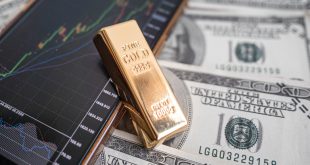Asian stocks experienced gains in choppy trade on Thursday, spurred by optimism following an outsized 50 basis point rate cut by the Federal Reserve, though the central bank’s higher projection for neutral rates tempered the enthusiasm. Wall Street’s weak overnight close also weighed on sentiment. However, U.S. stock index futures saw a sharp rise during Asian trade.
Japanese Markets Surge on Weaker Yen, BOJ Meeting Anticipation
Japan’s Nikkei 225 and TOPIX indexes were standout performers, rising between 2% and 2.8%, fueled by a weaker yen that fell sharply after the Fed meeting. The yen’s decline was driven by a stronger dollar, while the Bank of Japan’s upcoming meeting on Friday further supported gains in Japanese equities.
Speculation around the BOJ’s decision, particularly regarding another possible interest rate hike, played a role in the market’s strength. In recent weeks, BOJ officials have made hawkish comments, suggesting an interest rate increase as inflation picks up in Japan. Additionally, Japanese consumer inflation data, due on Friday, is expected to offer more insights into future monetary policy.
Muted Reaction in Broader Asian Markets
Elsewhere in Asia, stocks had a more subdued response to the Fed’s decision:
- Australia’s ASX 200 rose 0.3%, but gains were capped by strong labor market data, which may give the Reserve Bank of Australia more flexibility to maintain higher rates.
- China’s CSI 300 and Shanghai Composite indexes climbed 0.5% and 0.4%, respectively, continuing a mild recovery from recent seven-month lows. The Hang Seng index in Hong Kong gained 0.6%.
- South Korea’s KOSPI fell 0.5%, coming off a three-day market break.
- India’s Nifty 50 futures pointed to a positive opening, approaching new record highs.
The People’s Bank of China is scheduled to decide on its benchmark loan prime rate on Friday, but analysts are not expecting any changes, given the government’s cautious approach to introducing more stimulus.
Fed’s Powell Raises Concerns About Long-Term Rate Outlook
Federal Reserve Chair Jerome Powell sought to ease concerns about a weakening U.S. economy, stating that risks related to inflation and the labor market are now balanced. However, Powell’s comments about higher neutral rates in the long term and the central bank’s reluctance to return to the ultra-low rates seen during the pandemic have raised questions about how deep the current easing cycle will be.
Overall, while the Fed’s aggressive rate cut was welcomed, Powell’s remarks suggested that interest rates might not fall as significantly as some market participants had anticipated. This has tempered investor optimism regarding future rate cuts and growth prospects.
 Noor Trends News, Technical Analysis, Educational Tools and Recommendations
Noor Trends News, Technical Analysis, Educational Tools and Recommendations





